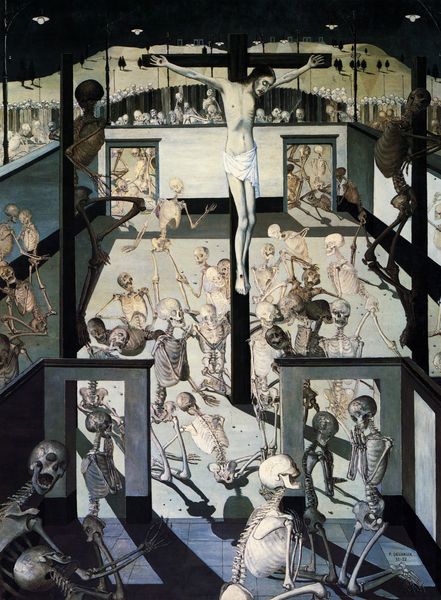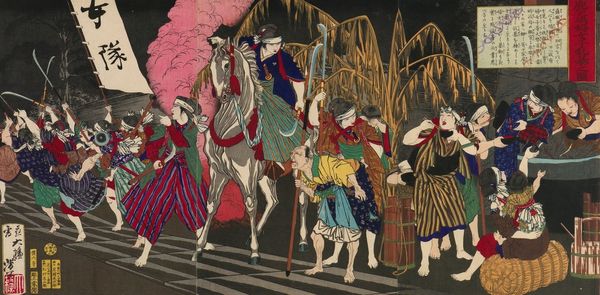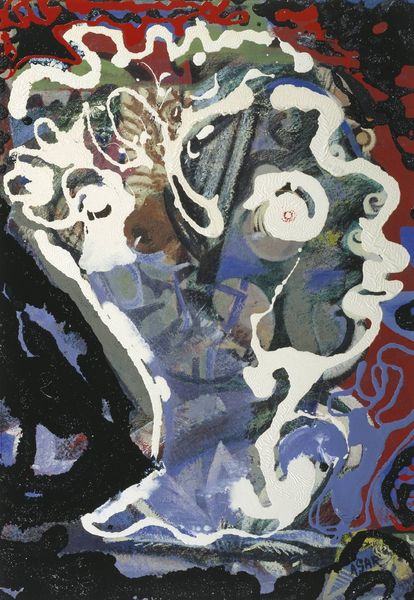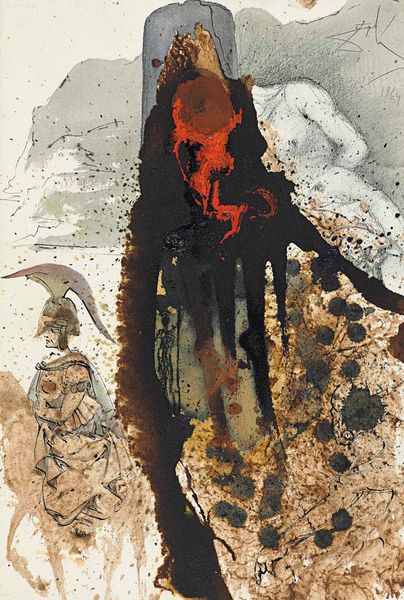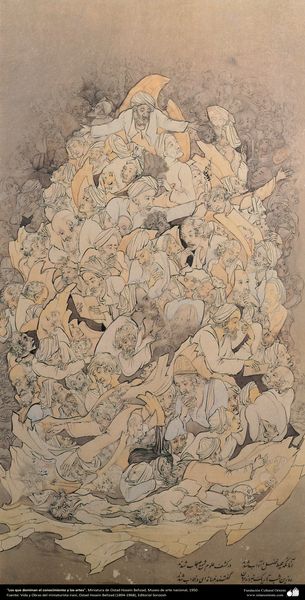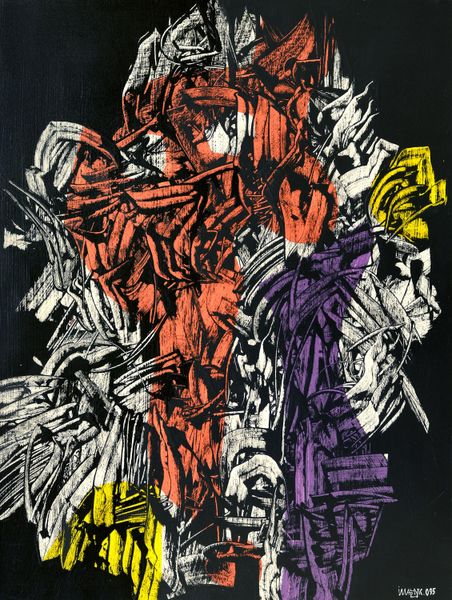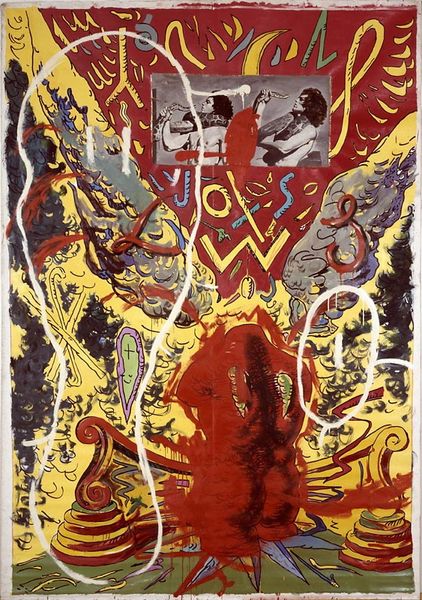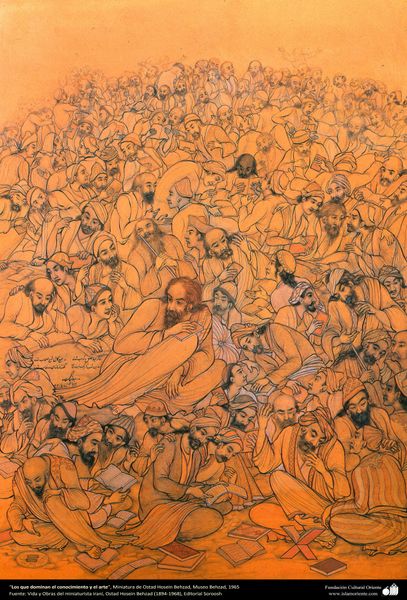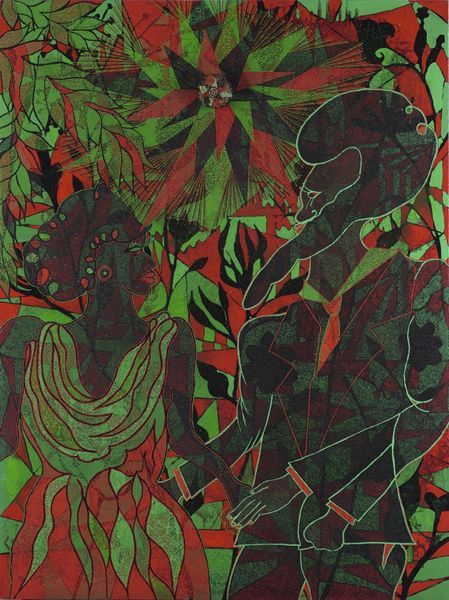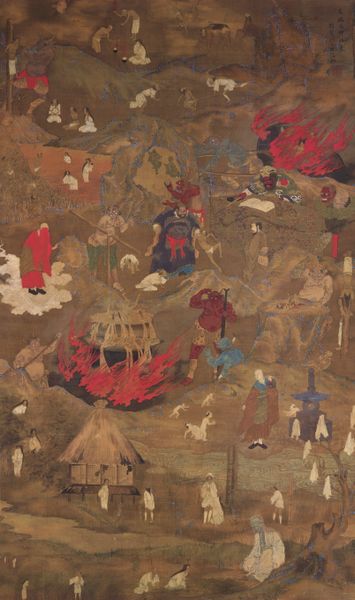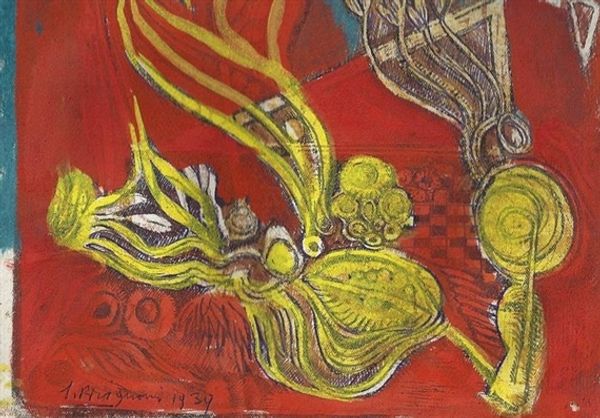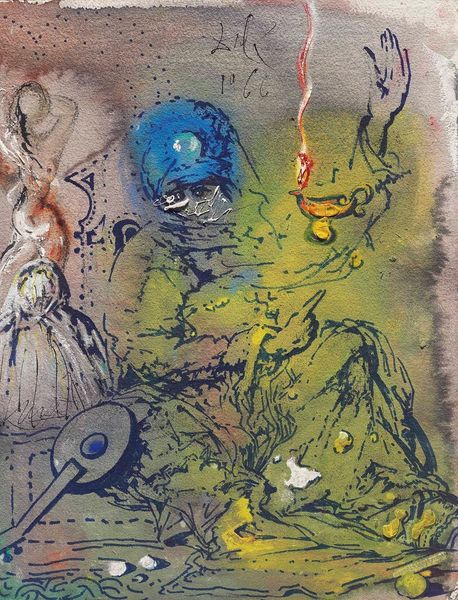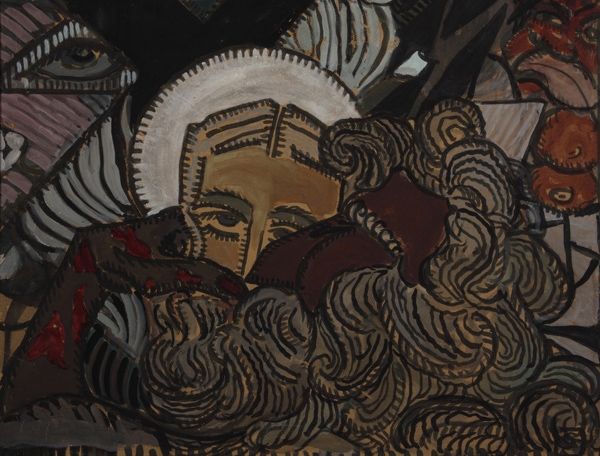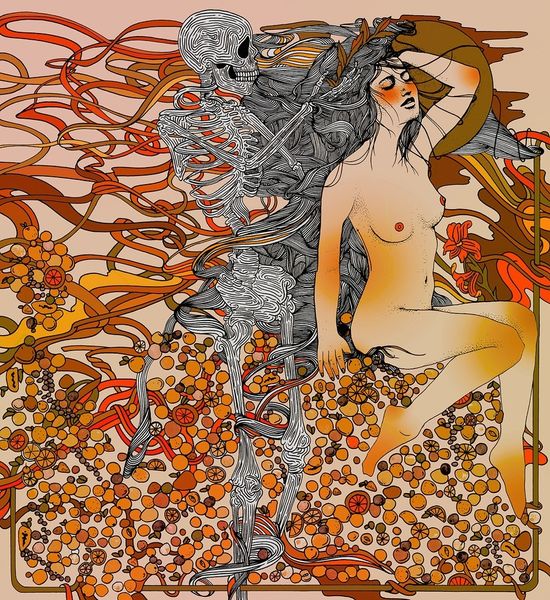
graphic-art, print
#
portrait
#
art-deco
#
graphic-art
# print
#
naive art
#
symbolism
Copyright: Erte,Fair Use
Curator: Erte's graphic print, "Opium/Mah-Jongg," presents a striking visual arrangement. What’s your initial reaction to the work? Editor: The piece feels both opulent and unsettling. The woman's languid pose and the intense masks looming above her are really striking, not only the dramatic contrast but also the overall composition in saturated red and gold tones on a somber backdrop. Curator: Precisely. Note the stark contrast in texture, the flat picture plane against the suggested depth creates tension. What statements might Erte be making by integrating practices like opium smoking and playing Mahjong, within an aesthetic framework? Editor: I wonder about the materiality here. What inks and paper stock would have been used to achieve these deep colors and textures in printmaking? The method would certainly shape how these motifs were perceived in their period. Also, looking at the repeated geometries—considering their roles in manufacturing and in commerce at the time. Curator: A shrewd observation. From a semiotic stance, the figures with expressionless masks seem to signify a loss of individualism under social conformity. They lack specific emotion, emphasizing a unified aesthetic impact. Erte utilizes the geometry not just aesthetically, but as coded gestures of control. Editor: The production details must have added nuance. Imagine those repetitive geometrical forms being carved out. Labor intensivity indicates not only status but the material construction itself. The opulence here cannot be divorced from the system it necessitated. Curator: Erte indeed manipulates motifs, deploying masks and geometry for symbolism and aesthetic charm. Their repetitive arrangement also contributes significantly to its thematic content and narrative intent, drawing the eye into a space of almost dreamlike interpretation. Editor: Ultimately, appreciating its material origin encourages contemplation on craft versus high art, and highlights the complicated relationship between labor, leisure, and status that underpin Erte's compositions. Thank you for elucidating it to me, very useful information!
Comments
No comments
Be the first to comment and join the conversation on the ultimate creative platform.
